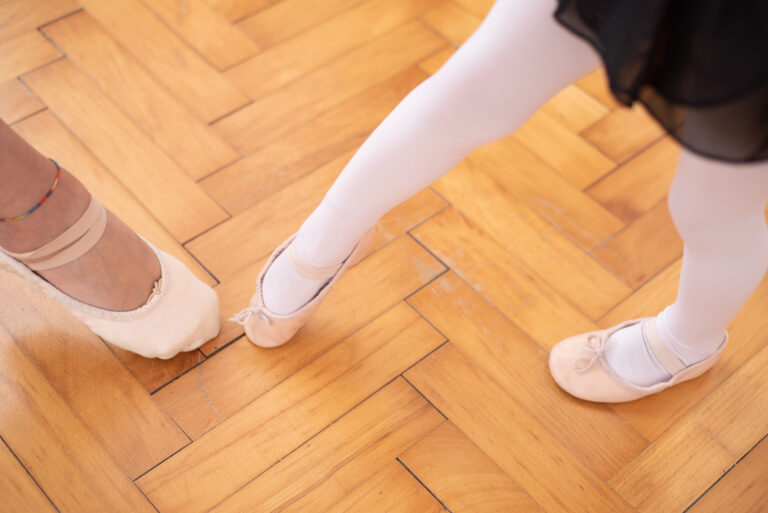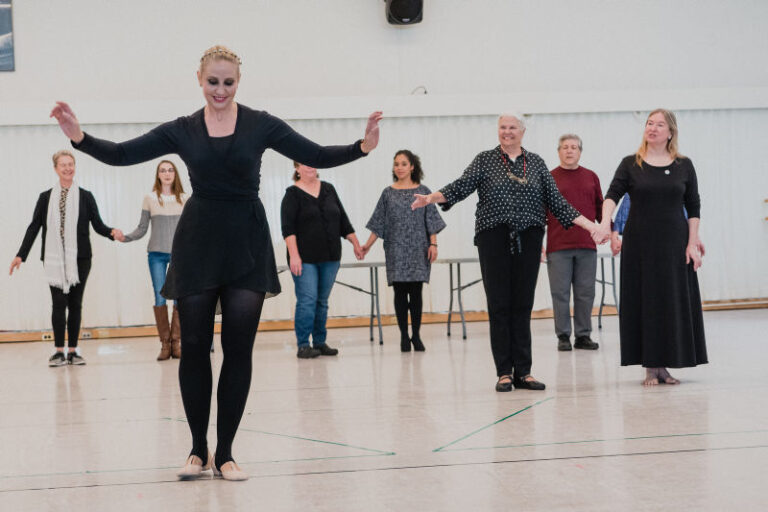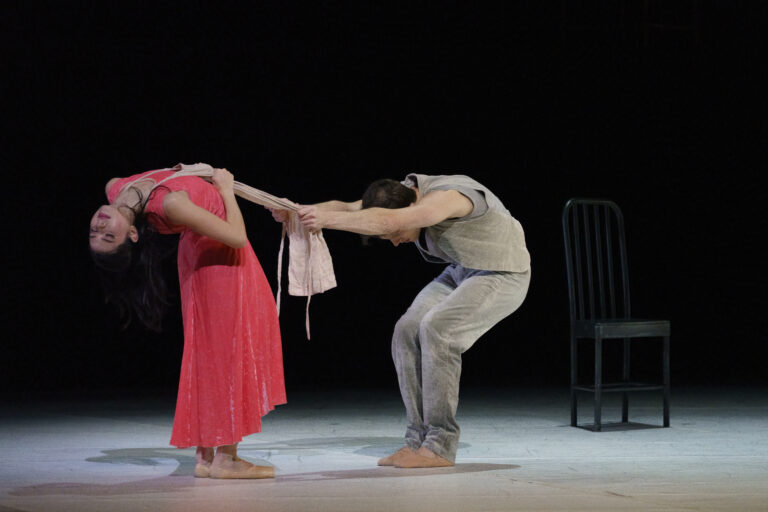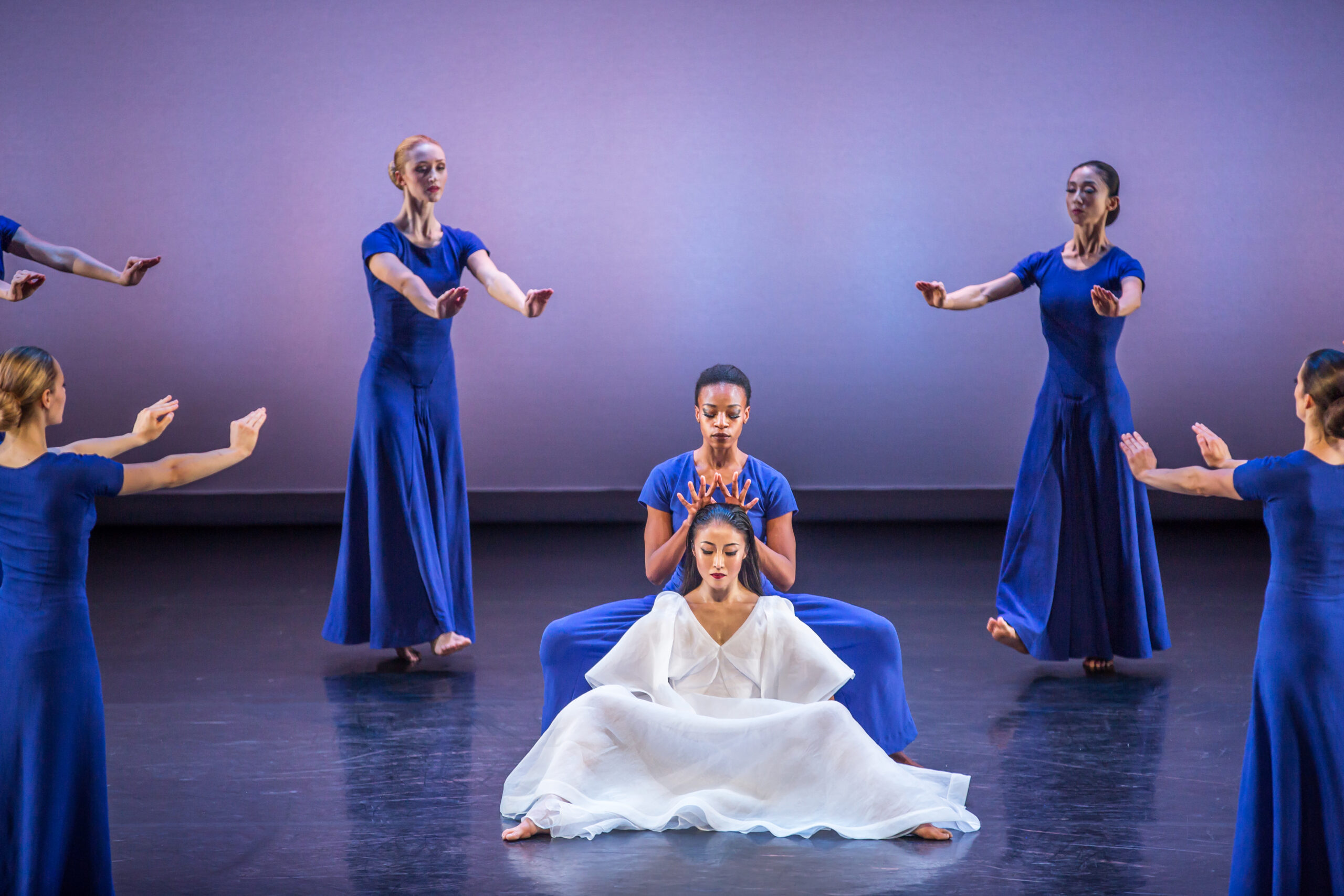
When Emilie Gerrity performed in Jerome Robbins’ Moves, it was her first time dancing a work without music. “It was super-exciting and just different from anything else I had ever experienced before,” she remembers.
Dance and music are deeply interconnected, so it’s likely that dance students might not have much experience performing in silence. But it’s still a valuable skill to learn—and one with many transferable lessons embedded.
Emphasize the Group
Sam Black, company director of Mark Morris Dance Group, says he uses Morris’ Behemoth, which is danced without music, to teach students about the importance of approaching work as a collective. He says the piece contains vital lessons about unison and the importance of attuning oneself to other dancers’ movements and tempos.
“I often talk about—even though it’s impossible—osmosis, trying to absorb each other’s timing,” Black explains.
To implement these concepts in your own lesson, Black recommends teaching a simple movement phrase without counts. Then, cover the mirrors—or instruct the dancers to face away from them—as they perform the phrase, working to maintain unison as a group.
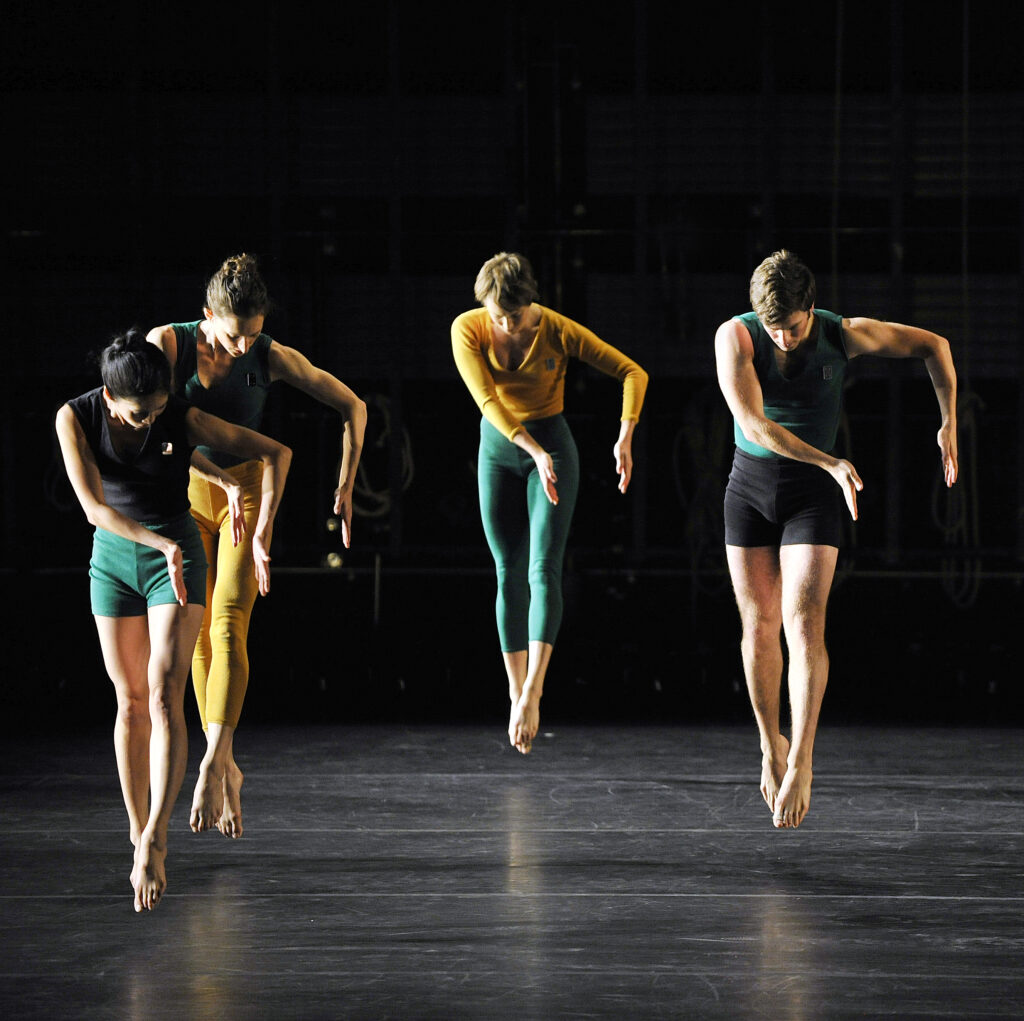
Leslie Andrea Williams, a member of the Martha Graham Dance Company, adds that a dance-based game of “follow the leader” can also help students learn to move as one, an essential skill when dancing without music. After teaching a phrase, designate one student to set the group’s tempo while dancing the phrase together. Then, switch leaders at your own discretion, as the dancers adjust to follow. To start, dancers can all face the front of the room, then, as they get more comfortable, try facing towards the center of the room or in many different directions.
“It’s good practice for the ensemble to know how to follow and to do that quickly and have it change,” she explains. “Depending on where [a dancer] is in the space, [they] want to make sure that everyone’s doing the same thing at the same time.”
Be Mindful of Cueing
Students are likely used to using music for practical elements of choreography, like keeping track of counts and entrances, as well as for artistic motivations and understanding of the theme and tone of a piece. Because of this, dancing without music will be an adjustment. By being intentional with cueing and corrections, you’ll be in the position to ease this transition.
Gerrity says that, especially when rehearsing a work without music, using clear instructions is key. “I think giving an image of what something should look like and being super-specific about details is the most important part,” she says, adding that learning one section of the pas de deux in Moves should feel like a “standoff “ was a key moment of understanding when rehearsing the piece.
“Things like that … [give] an understanding for the student to be like, ‘Oh, okay, this is what I should be creating,’ or just thinking about it, so they can understand better what they’re supposed to be showing,” Gerrity says.
She also adds that sensory-based cueing was particularly helpful when she was learning Moves. Receiving feedback that noted when a specific move felt “hot” in temperature or “like a shock” provided her with the mental images needed to find the correct dynamics. Try providing students with clear, simple, and easily understood images to enhance their understanding of the intention and impact behind a step or phrase.
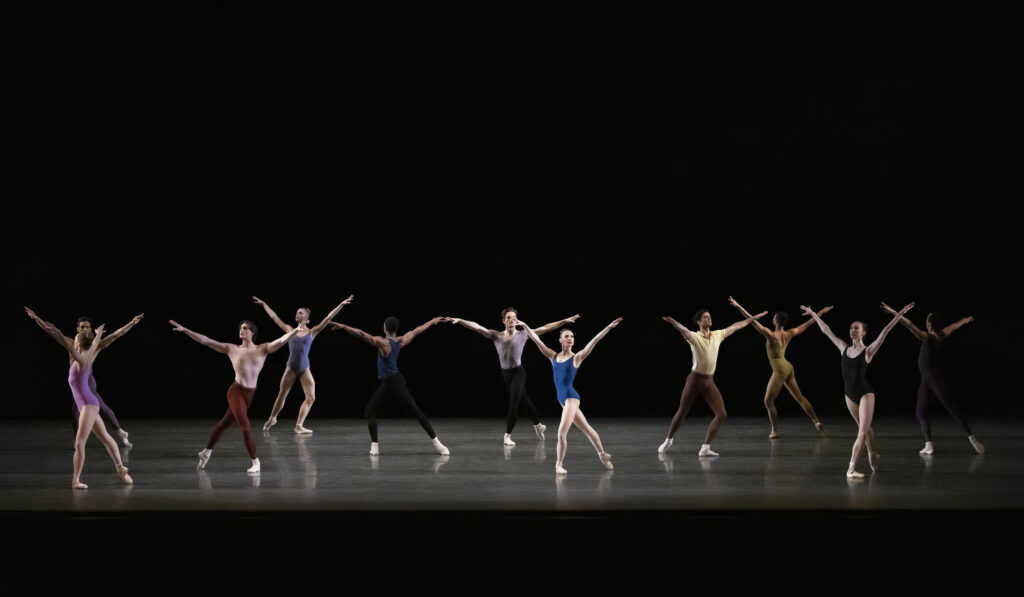
Don’t Ignore Music
Although it may seem counterintuitive, another way to help students understand the artistry and timing of a silent work is to emphasize musicality, specifically rhythm and tempo. Williams remembers learning this lesson when she was first rehearsing for Graham’s Steps in the Street, which is partially silent.
“I noticed how important musicality is in silence,” she says, adding, “I wasn’t just in the chorus, I was the lead chorus person, so it was my job to set the counts.”
Williams’ “follow the leader” exercise described above will help students learn to set the beat for the group. Additionally, Black recommends starting with music and removing it later to further emphasize musicality.
Start by teaching a phrase with a very simple rhythm, like an eight-count with one move per beat. “Do it a few times with music, so everyone sort of feels the tempo and gets it in their bodies,” Black explains. “Then, take the music away and have them do the same phrase without any music, just keeping that rhythm somewhere in the body. Our heartbeats and our breathing are natural rhythms—it’s all in there.”
To watch a video tutorial on teaching your students to dance without music (led by Black), click here.

